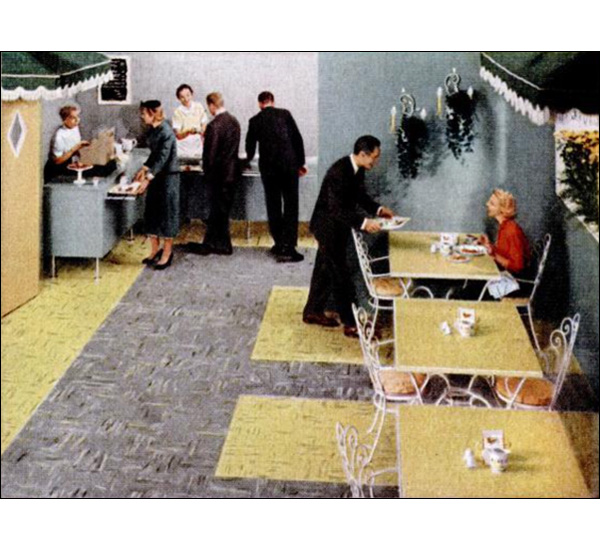 On the way to the office, crossing the street. Man walking east, two women walking west. He says HELLO HELLO as they pass; they say nothing. On the way to the office, crossing the street. Man walking east, two women walking west. He says HELLO HELLO as they pass; they say nothing.
“I SAID HELLO BECAUSE YOU WERE WEARING PURPLE,” he shouts afterwards. “THAT’S THE COLOR OF ROYALTY AND I THOUGHT IT MEANT YOU MIGHT BE UP FOR SOME LOVIN’”
Not sure how that follows. He sighs.
“Live and learn,” he mutters. Turns to the woman standing on the corner. “Now how far I got to go to get to the trains.”
She didn’t respond, lest “two blocks east” mean she, too, is up for some lovin’.
Warm day; sinful to be inside. Never has Monday felt like so much Monday. I’m usually immune to that, because I like Mondays, but this one felt like a sack of hot possums.
Not sure what that means, but I like it. You can always get that “folk wisdom” touch if you add a possum.

Sunday was this fun again.

The return of the Oak Island Water Feature, something that would have been a literal money pit if I had paid the contractor the entire amount, which I did not. The understand was that he would be happy with the first half of the payment and I would not badger him for the next 30 years. Seemed fair. Unfortunately I have this . . . thing, which has been working intermittently and leaks and needs to be repaired, preferably with one of those bunker busting ordnances the Military has.
I drained it with the pump, and raked up the slimy rotten leaves that had accumulated over the winter. Horrid odorous dreck. Picked it up with my hands, muttering like Popeye, and hosed it out and filled it up and turned on the fountain: it works! It works!
Until it drains, but it works!
A while later I looked back to make sure Scout wasn’t drinking the water, which was probably still a bit on the rancid side.
DOG IS IN THE WATER TANK. Hey, it was hot.
On that day I also did a minor mulch run; eight bags, four of which went on an area previously mulched but insufficiently weeded and Preened. The other four bags went under the birches in the front lawn. Four would be enough, my wife said. Turns out she needed eight. So that’s four next weekend, and another four for the side of the house. Then we’re done.
HAHAHAHAHAHHAHA yeah yeah. I know.

Tuesday I’ll be recording a segment on a local public radio show. Name five pieces. Why are they your favorites? Hard to choose, especially since you immediately go into your Public Mode, because people make assumptions about you based on what you choose. You could say that’s unfair, but it’s not; if someone’s tastes get no more complex than 101 Strings, I assume that they find the simplicity sufficient, and find large, complex works a bit too tangled up and overstated. 101 Strings is a Hallmark card; a symphony is a novel.
There’s no snobbery in that. Well, some. Well, a lot. I’m not saying that 101 Strings can’t be good; as the great man said, if it sounds good, it is good.(101 Strings is most often Not Good, but I’ll be playing contrary examples in Vinyl down the road.) But there is a hierarchy. It has to do with the skill required to play, the intelligence required to write, and the complexity of the work. Hey there buckaroo, don’t hand me that hoity and/or toity intellectual shibboleth what says good art has to be complex. I am; here you go. Is this even debatable? It is, some times; the Great Leveling of the Sixties insisted that there was a spectrum, not a hierarchy, so Beatles are over here and Beethoven is over there and it’s all equal in the sense that it’s all good.
It’s not always a matter of complexity. For example: a High Renaissance painting, to be fully appreciated, requires an understanding of the style, the predecessor styles, the school, the iconography, the allegorical message or precise scriptural lesson, and the name of that fellow in the corner who’s probably the patron. And so on. But it still can be dull, and compared to an Impressionist painting that requires nothing but putting your face into the steam-bath of color, it’s remote. The Impressionist painting requires less of you, but the style was a reaction to the didactic, representational, formal art that preceded it, and understanding its context in history lends to your appreciation of its importance.
So? You have to get why something’s important to appreciate it? No. But yes, if you want to understand if fully. Why is the question that opens up art into something else. Why and How. These lead you into the work and teach you something.
My playlist? Stay tuned.


Odds and ends for the above-the-fold feature. It's Tile Time, ladies and gentlemen.

A kitchen yesterday; a gay cafe today. As they once said.

Everything here is Congoleum. The floor, the tables, the walls. It's the "Bermuda Hues" line, which sounds so romantic; women could say they were having the whole room done in Bermuda Hues, and the friends would have to nod and pretend they knew what that meant.


Warning to bachelors!

It's one of those hues that makes you realize you miss it. Tomato Red. Wikipedia on the maker: "In 1917, using a “paint” derived from automobile paint finish, Cutex introduced a liquid nail polish." Later they introduced nail polish remover, which perhaps was derived from something that dissolved cars. It was diluted, of course.

Not often is "Elegance" ascribed to "that patrol-car look":

But if you call it Lorraine, the women will want one! Sure. I'm surprised they didn't market it as a Lurker Revealer or a Masher Spotlight.
What happened to Appleton Electric? Still around. Company bio: "In 1885, Swedish immigrant Albert Ivar Appleton arrived with his parents in Chicago, Illinois, where the young teenager found employment as a machinist in the tool and die making trade. He soon achieved success as a foreman for the Independent Electric Company" and so on.

 |
|
Tested Papers of America1 Do not perform acts of individual daintiness restoration with untested papers.
Looks like their patents expired around 1950. Surprised they lasted that long, given the pedestrian and utilitarian nature of the name. Double-down is something you do while gambling.
|
| |
|
|

That which some people do not know bleep from:

There are always people who heard the phrase but never knew there actually was Shinola.
There were many Shinolas.

In a rare confluence of Products1 and the LISTEN features, here's a commercial for Shinola. I heard this in an old radio show decades ago and digitized it, but only had the tag line; it stayed me forever as the epitome of casual commercial crooning and elemental tunefulness.


That's a jingle.

Deltox would never be sold today; sounds poisonous. If you're gullible. A $15,000 home!

That's about $135,000 today. Still a bargain. That place would be a million in some parts of California.
Deltox rugs were made by the Oshkosh Grass Matting Company. They were responsible for half of the "wire grass rugs" made in the US. From this Oshkosh history page, we learn:
Oshkosh Grass Matting Company was formed in 1902 by Leander Choate, R. C. Brown, and Emil H. Steiger in Oshkosh, WI. Marsh grass from the area of Freemont, WI was used to make grass rugs. In 1912 the company became Deltox Grass Rug Company.
In 1924 the name was changed again to Deltox Rug Company and 1929 was the last year grass was used to make carpets. That year Carl and Emil Steiger took over the company when their father died. The company closed in January 1968.
Where did they come up with Deltox?

The Waxed Paper Industry reminds you to use Waxed Paper!

It protects Vitamin Enhancement, and they have Chemical Sprites to prove it. Beautiful depiction, but doesn't the seam go under the loaf?

That's it. Heck, that seems to be enough. See you around!

|